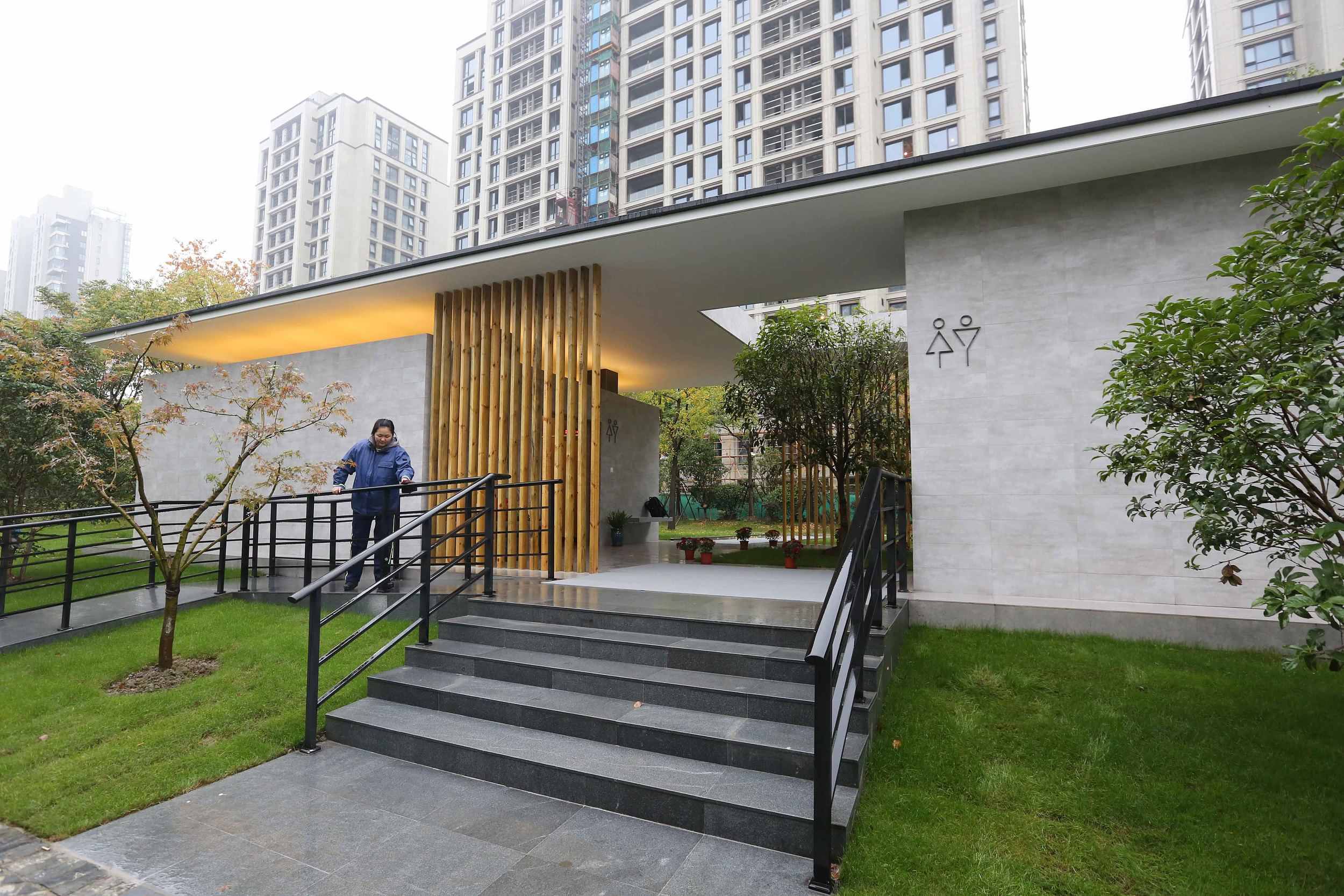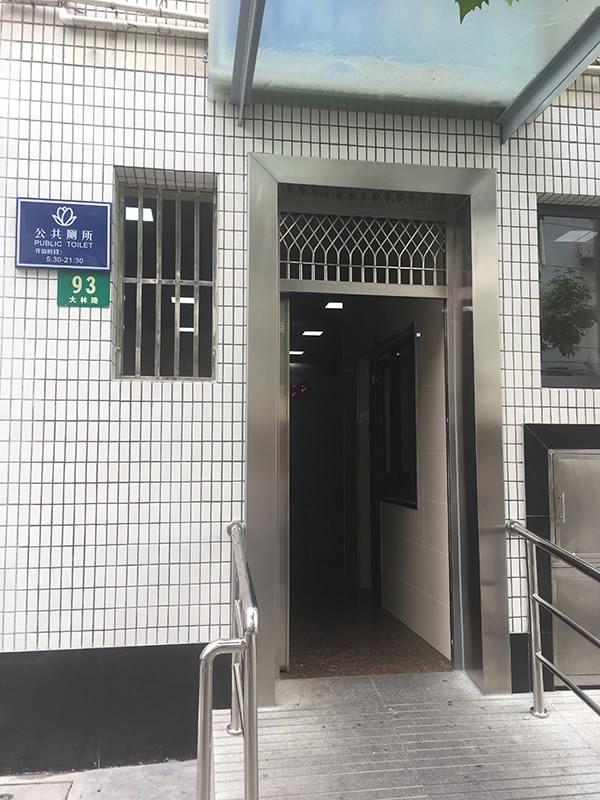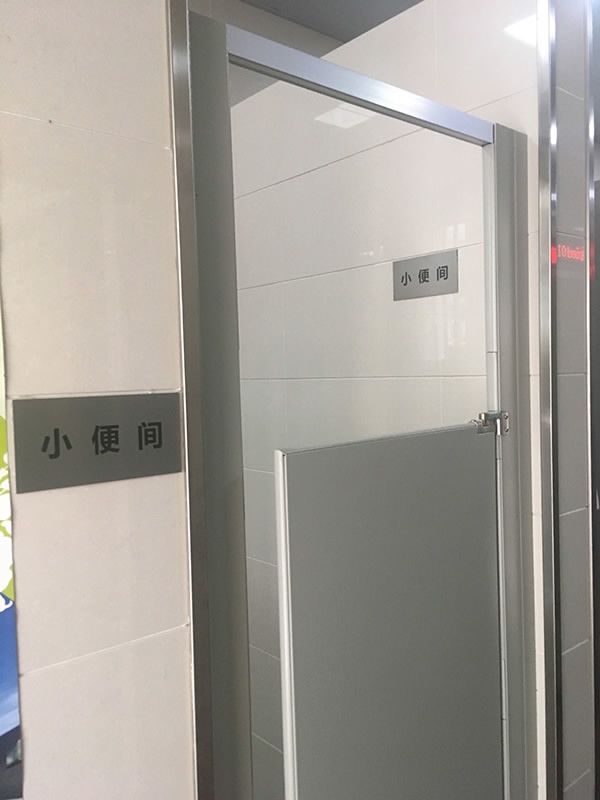A second unisex public toilet in Shanghai is giving women relief from queuing up for a long time, but some netizens are making a stink about the facility.
It has been two months since the restroom was opened in a densely populated area in Huangpu district, and female residents are already seeing their time waiting in line significantly cut down.
The establishment of the facility came on the heels of the city’s first gender-neutral public restroom opening its doors in Pudong district, in November 19 last year, coinciding with World Toilet Day.

The inside of Shanghai's second unisex public toilet. /The Paper Photo
The two spaces are part of the local government’s push to tackle the long queues outside women’s toilet, at a time calls are mounting nationwide for concerted efforts to achieve “potty parity” – the equitable provision of toilets for women and men in public spaces.
Since 2015, China has been undergoing a “toilet revolution,” upgrading or installing 50,916 lavatories across the country. However, fairness to toilet access has taken the backseat as focus has been concentrated on improving restroom sanitation and infrastructure. But as of late, voices for solutions to long waiting outside the ladies’ loos have been loud, prompting action from the government.

People lined up in Shanghai's second unisex public toilet. /The Paper Photo
It’s no secret that a trip to the toilet costs women more time than men, for a handful of reasons including biological differences. According to a 2010 Chinese survey, which tracked for a decade toilet usage at auto exhibitions, outdoor events and two World Expos, men spend on average 48 seconds to urinate, while women need 114 seconds.
More time inside the cubicle is translated in more crowds outside the cubicle. A report published by Shanghai Municipal Women and Children Committee said that nearly two-thirds of women they interviewed said they have to wait between one to five minutes before using public toilets.
The city’s answer to the smelly situation: all-gender public toilets.

Shanghai's first gender-neutral restroom in a park in Pudong district /VCG Photo
The Huangpu facility covers an area of 33 square meters. It is composed of nine all-gender-friendly stalls, along with a separate room for urinals. LED screens placed on top of each cubicle indicate whether it is vacant or occupied.
A local resident surnamed Wang told thepaper.cn that there is “essentially no need to queue” any more after the installation of the unisex toilet.
Despite also being aimed at the elderly and people with disabilities and mobility impairment, concern about all-gender restrooms has centered on how appropriate they are for women.
Wang has cast doubt over whether such facilities are safe for women, saying she felt embarrassed sharing the space with men, especially when some seniors pull their zippers where they should not.

The entrance of Shanghai's second unisex public toilet /The Paper Photo
The local government understands well the novelty of all-gender toilets in the city, and is moving along with its plan to bring into operations more of such facilities slowly as it gauges public reaction.
An official with the Shanghai Municipal Administration of Afforestation & City Appearance said that the aim is to answer the demands of residents and adjust the facilities based on their practical use.
“If citizens cannot embrace it, we could re-install sex-segregated restrooms back,” the official said.
However, precautions are being taken to avoid any mishaps.
Two managers at the restroom closely watch over the place in alternating shifts during the opening hours from 5.30 a.m. to 9.30 p.m. Moreover, two-meter high partitions separate the stalls, bringing an extra sense of safety.
The problem of long queues, which the gender-neutral toilets are attempting to solve, have prompted women years ago to call for the increase of the ratio of women’s toilets to men’s, and inspired activists to launch multiple campaigns to advocate for more cubicles for women in China.
In 2012, south China’s Guangdong Province saw “occupy men’s toilets” campaign, when female volunteers took over vacant cubicles in men's restrooms to let women waiting outside have the priority to using the facility.
Last May, “all gender campaign” succeeded in turning over 30 toilets in the capital city into gender-friendly facilities.

The toilet has a separate room for urinals. /The Paper Photo
Online, netizens on China’s twitter-like Weibo were divided, with some saying it is common for people to use same toilets in certain public spaces, while others raised safety concerns.
“What’s so awkward? (Unisex) toilets are used on planes and trains,” a user who goes by the name @SosoJackcai said.
“Will this be much easier for people to install hidden cameras in the toilet?” @falaodefeng inquired.
“The doors have gaps. How to ensure our safety?” @Wahkit-Lai noted.









